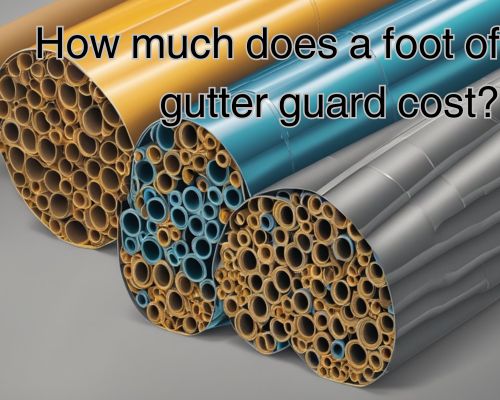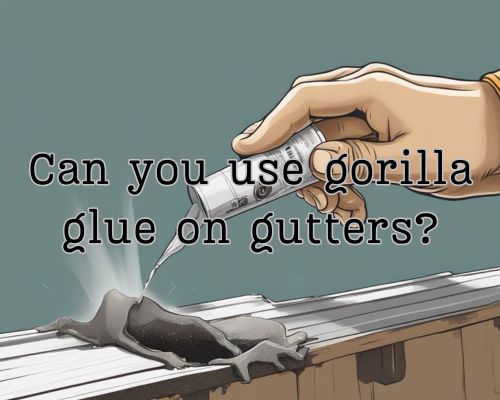How Much Does a Foot of Gutter Guard Cost? A Comprehensive Pricing Guide
When considering the installation of gutter guards, one of the first questions you may have is about cost efficiency.
On average, a foot of gutter guard material typically ranges from $5 to $10 per linear foot. This price can fluctuate based on the type of material chosen, such as mesh, foam, or reverse curve systems.
Making the right choice is crucial as gutter guards play a significant role in protecting your home from water damage, debris build-up, and reducing maintenance needs.

Understanding the impact of gutter guards on your property is vital. They serve as a protective barrier for your gutters, preventing leaves, pests, and other debris from causing blockages.
This not only prolongs the lifespan of your gutter system but also contributes to maintaining the structural integrity of your home.
Selecting appropriate gutter guards can result in long-term savings by minimizing the frequency of repairs and cleanings.
By investing in the right gutter protection, you ensure a hassle-free experience and safeguard your property against potential water damage risks.
Understanding Gutter Guard Types and Materials
When selecting gutter guards, it’s crucial to consider the various types and materials available, each with distinct benefits.
Screen and mesh guards are popular for their affordability, while foam and brush guards offer ease of installation. Surface tension and reverse curve guards are noted for their effectiveness in water management, see https://guttersofwestpalmbeach.com/.
Screen and Mesh Gutter Guards
Screen guards, often made from aluminum or plastic, are a cost-effective choice. They consist of a perforated cover that filters out large debris while allowing water to flow through.
Aluminum screen guards are durable and resist rust, making them ideal for long-term use.
Mesh and micro-mesh guards provide finer filtration. Micro-mesh options can block small particles, such as pine needles.
Although slightly more expensive, they offer superior protection against clogging.
Steel screen guards are another robust choice, ensuring longevity but may require professional installation.
Consider the size and type of debris typical in your area to choose the best option for your home.
Foam and Brush Gutter Guards
Foam guards are inserts placed directly inside your gutters. Made from porous polyurethane, they let water pass while preventing clogs from leaves and larger debris.
Installation is a straightforward DIY task, making them suitable for homeowners looking to save on costs. However, over time, foam may deteriorate or support mold growth.
Brush guards, resembling oversized pipe cleaners, sit inside gutters to catch debris. They’re simple to install and remove, making maintenance easy.
Despite their convenience, they may require frequent cleaning due to the tendency for debris to accumulate around the bristles.
Both options are practical for those seeking easy solutions but may not be effective against very fine debris.
Surface Tension and Reverse Curve Gutter Guards
Surface tension guards, also known as gutter helmets, utilize the principle that water clings to the surface as it flows.
These guards have a rounded edge that directs rainwater into the gutter while shedding debris.
They’re highly effective, often made from durable aluminum or other metals, ensuring long-term use.
Reverse curve guards are similar, utilizing a design that re-directs water into the gutter through a small slit.
These guards generally require professional installation due to their complexity and custom fitting needs.
While they are excellent at water management and debris exclusion, they are among the more expensive options available. These are ideal for areas prone to heavy rainfall.
Cost Factors of Gutter Guard Installation
When considering gutter guard installation, various factors significantly impact pricing. Professional installation costs, material and brand choices, and the complexity of your roof and gutters all play critical roles.
Assessing Professional vs. DIY Installation
Opting for professional installation, see https://guttersofwestpalmbeach.com/, often incurs higher costs due to labor expenses and ensures a guarantee on workmanship.
Professional gutter guard installation might be necessary if your roof configuration is complex or if safety is a concern. The time of year can affect labor costs as contractors may have lower rates during off-peak seasons.
On the other hand, a DIY installation can be more budget-friendly, as you only pay for materials and tools.
However, potential pitfalls include the risk of improper installation, which can lead to insufficient gutter protection.
Ensure you have the necessary skills and equipment to perform the installation safely and effectively.
Weighing these options carefully can help you decide the best approach based on your budget and abilities.
Material and Brand Pricing
The choice of material significantly influences the cost per linear foot.
For example, plastic or vinyl screens are more affordable and typically range from $0.50 to $1.00 per foot.
In contrast, surface tension helmet guards can be pricier, but they often offer superior durability and effectiveness.
Additionally, different brands offer varying levels of quality and pricing.
Established gutter guard companies may charge premium prices for well-known brands due to their reputation for quality.
Conducting thorough research and comparing multiple brands will help you find products that offer good value for money.
Considerations for Roof and Gutter Complexity
The complexity of your roof and gutter system is a pivotal element in determining the gutter guard installation costs.
Factors such as roof type, slope, and the size and height of your gutters affect the cost and difficulty of installation.
A steep or multi-story roof will likely result in higher labor costs, especially with professional installation.
Geographic location and climate influence the choice of gutter guard material. Some are designed to withstand specific weather conditions better than others.
Extreme climates may require more robust systems, potentially increasing costs.
Knowing these factors will allow you to make informed decisions in aligning your gutter guard options with your home’s unique needs.


